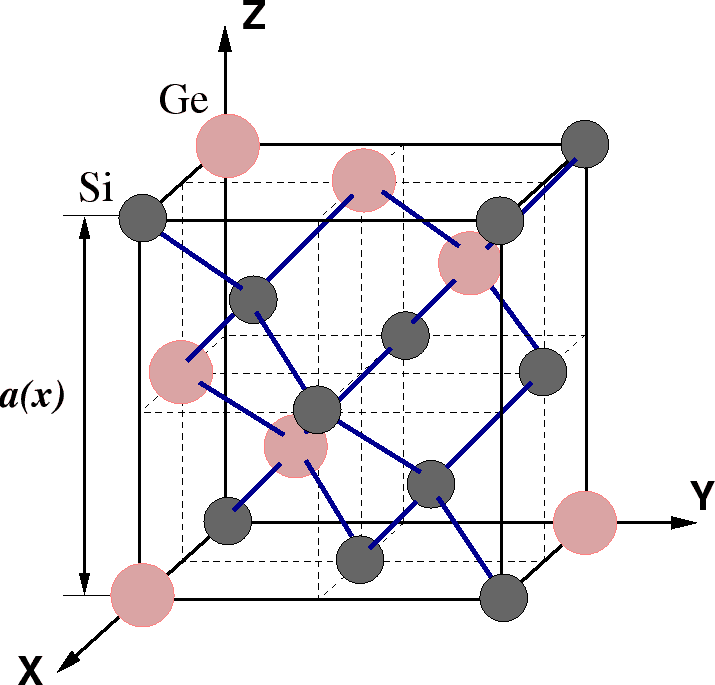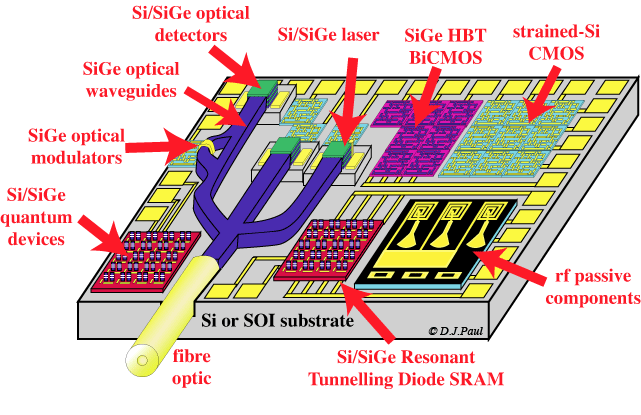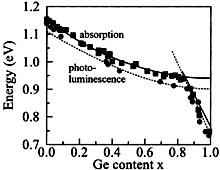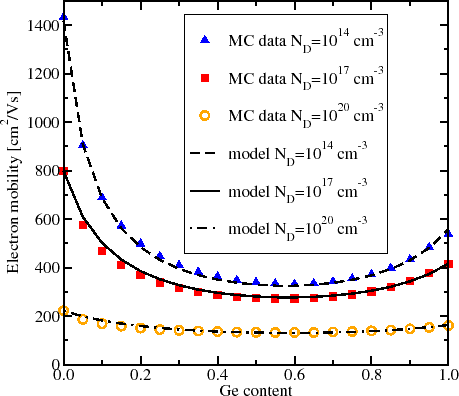Developing silicon germanium devices for space
SiGe (/ˈsɪɡiː/ or /ˈsaɪdʒiː/), or silicon-germanium, is an alloy with any molar ratio of silicon and germanium, i.e. with a molecular formula of the form Si1−xGex. It is commonly used as a semiconductor material in integrated circuits (ICs) for heterojunction bipolar transistors or as a strain-inducing layer for CMOS transistors. IBM introduced the technology into mainstream manufacturing in 1989. This relatively new technology offers opportunities in mixed-signal circuit and analog circuit IC design and manufacture.
Contents
- Developing silicon germanium devices for space
- Production
- SiGe transistors
- Thermoelectric application
- References

Production

The use of silicon-germanium as a semiconductor was championed by Bernie Meyerson. SiGe is manufactured on silicon wafers using conventional silicon processing toolsets. SiGe processes achieve costs similar to those of silicon CMOS manufacturing and are lower than those of other heterojunction technologies such as gallium arsenide. Recently, organogermanium precursors (e.g. isobutylgermane, alkylgermanium trichlorides, and dimethylaminogermanium trichloride) have been examined as less hazardous liquid alternatives to germane for MOVPE deposition of Ge-containing films such as high purity Ge, SiGe, and strained silicon.

SiGe foundry services are offered by several semiconductor technology companies. AMD disclosed a joint development with IBM for a SiGe stressed-silicon technology, targeting the 65-nm process. TSMC also sells SiGe manufacturing capacity.

In July 2015, IBM announced that it had created working samples of transistors using a 7 nm silicon-germanium process, promising a quadrupling in the amount of transistors compared to a contemporary process.
SiGe transistors

SiGe allows CMOS logic to be integrated with heterojunction bipolar transistors, making it suitable for mixed-signal circuits. Heterojunction bipolar transistors have higher forward gain and lower reverse gain than traditional homojunction bipolar transistors. This translates into better low current and high frequency performance. Being a heterojunction technology with an adjustable band gap, the SiGe offers the opportunity for more flexible band gap tuning than silicon-only technology.

Silicon Germanium-on-insulator (SGOI) is a technology analogous to the Silicon-On-Insulator (SOI) technology currently employed in computer chips. SGOI increases the speed of the transistors inside microchips by straining the crystal lattice under the MOS transistor gate, resulting in improved electron mobility and higher drive currents. SiGe MOSFETs can also provide lower junction leakage due to the lower band gap value of SiGe. However, a major issue with SGOI MOSFETs is the inability to form stable oxides with silicon germanium using standard silicon oxidation processing.
Thermoelectric application
A silicon germanium thermoelectric device, MHW-RTG3, was used in the Voyager 1 and 2 spacecraft.
